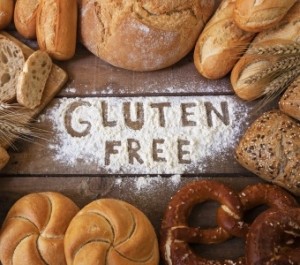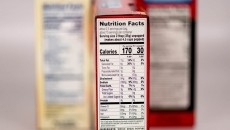IBIE 2016 PREVIEW
Trends shaping NPD and consumer behavior in the US bakery market

Canadean
Tom Vierhile
Innovation Insights Director
Allergens
Allergens is not necessarily a new development, but something to keep an eye out for since allergy avoidance is part of the clean label trend.
Gluten free has been a big trend for a long time and that figures to continue. According to a Q3 2016 survey from Canadean, 11% of American consumers say they avoid gluten entirely.
One trend that is relatively new in this area is that we are seeing more companies replace peanut butter with almond butter, and even 'pea butter' (as in the case of Annie’s Pea B & J crustless sandwiches, a new launch from Annie’s Homegrown which is a unit of General Mills) which are replacements that may be suitable for food allergy sufferers.
In-store bakery
The in-store bakery has been behind the innovation curve when it comes to leveraging wellness and functional food benefits.
At this summer’s International Dairy-Deli-Bakery Association (IDDBA) show in Houston, IDDBA President and CEO Mike Eardley mentioned that just 5% of in-store bakery products have declared health benefits.
We might see more focus on the health properties of breads and baked goods, especially products that may use nut and seed ingredients perceived by consumers to be healthful.
Snacking
The pace of new product innovation in this area has picked up in the baking industry. We’re seeing more companies take products like waffles and turn them into snacks or introduce baked goods in portable, single-serve packaging.
One potential opportunity for the bakery industry is to focus more on the morning snacking opportunity. One finding from Canadean’s Q3 2016 survey was a significant uptick in the percentage of US consumers saying they snack between breakfast and lunch. Since baked goods are often consumed during breakfast and, by extension, earlier in the day, it may be natural for the industry to pursue opportunities here.
Protein
Protein has been a near obsession with packaged food makers over the past few years. Companies are boosting the protein content of products such as wraps or flatbread by using ingredients like soy protein isolate.
Sugar
Sugar has become the villain of the moment in the food industry. We are seeing a few new products experiment with stevia as a sweetener, but it does not seem to have caught on to a large degree in the baking industry.
‘Rare sugar’ as in allulose is another potential replacement for high fructose corn syrup or cane sugar; there were a few companies at this year’s Institute of Food Technologists show marketing allulose and we may see a lot of innovation in this area in the next year or two. The big claim for allulose is that it can have about 70% of the sweetness of sugar, but almost none of the calories. It has been a sensation in Japan, but is largely unheard of here. That should change soon.
Indulgence
Indulgence is always going to be an opportunity for bakery, and there are always new flavors making a mark in the industry.
Red velvet, salted caramel and s’mores seem to be hot flavors of the moment. Pepperidge Farm recently launched cheese breads, which may be an interesting way to go since cheese can be an indulgent ingredient, but also one that seems healthful at the same time.
Mintel
William Roberts Jr
Senior food & drink analyst
Health-related concerns and preferences play a role not only in limiting the consumption of baked goods overall, but also in guiding the selection of bread consumers choose.
While 41% of consumers cite whole grain as a reason for choosing one brand of bread over another, putting it ahead of price as a purchase consideration, more than a third indicates the same for high-fiber breads and 29% prefer options that are all natural (with no artificial preservatives, colors, or additives). Taken together, these findings confirm the importance to bread brands of offering better-for-you varieties for consumers guided by specific health concerns.
Negative health perceptions
Although some four in five adults believe whole grain bread is more healthful than white bread, the bread aisle as a whole suffers from negative health perceptions that appear to be a key factor in the category’s declining consumption.
Most notably, seven in 10 bread consumers overall, and nearly nine in 10 of those who say they are purchasing less bread, agree that limiting intake of bread can help in weight loss. Additionally, more than half believe many breads lack nutrients. Collectively, these findings also underscore the need for education regarding the general health benefits of bread.
White bread is a popular staple for consumers, but most bread contains a high amount of rapidly digestible starch and, therefore, a high glycemic index, which can be problematic for diabetics.
Fortification with anthocyanins
Fortifying breads with anthocyanins via black rice extract could be an alternative way to produce functional bread with a lower digestion rate and extra health benefits.
Moreover, the use of black rice extract in a bakery product gives an opportunity for bread manufacturers to innovate and position new products with an antioxidant claim. In fact, between May 2013 and April 2016, 30% of food and drink product launches with anthocyanin (listed on pack) had an antioxidant claim, according to Mintel’s Global New Products Database.
Kantar Worldpanel
Matt Verity
Analyst
The healthy eating trend we’ve seen emerge over recent years is still very much in evidence within bakery. Sugar is becoming increasingly unpopular, with shoppers turning away from products considered typically ‘unhealthy’.
Manufacturers are changing their recipes to keep up, and healthy variants of existing ingredients are creeping into baked goods, with protein-packed grain quinoa proving particularly popular.
The health-conscious are also driving sales of gluten-free goods. In the UK, popular brands like Genius and Newburn Bakehouse are expanding their ranges and - with new gluten-free substitutes like banana flour arriving on the scene - the free-from trend looks set to stick around.
Manufacturers are exciting shoppers’ taste buds with more treat-worthy options too, sometimes creating new products by combining existing ones. An early invention was the cronut – croissant meets donut – and positive responses from consumers have sparked further experimentation.
Products such as the brookie, a cross between a brownie and a cookie, and even the interestingly-named ice-creamacaroon-wich, ice cream sandwiched between macaroons, are in the pipeline too, so the trend is gaining momentum.
Euromonitor
Raphael Moreau
Food Analyst
The general shift away from carbohydrates towards high-protein food creates challenges for baked goods manufacturers across developed markets.
For bread, pastries and cakes, health properties are main drivers for innovation and for achieving sales growth, notably through gluten-free products, with many recent new product launches positioned as gluten-free in developed markets.
In the UK, the Feel Free brand plans to launch gluten-free jam-filled doughnuts by the end of 2016. The company innovated by using a Twitter consumer survey to choose which new product to launch. Flower & White introduced its gluten-free muffins under the Muffinz brand.
In France, gluten-free bread and gluten-free cakes are expected to register value sales growth exceeding 20% in 2016. This was supported by the presence of well-recognized brands in this niche such as Gerblé, whose high-profile advertising campaign featured the tennis player Novak Djokovic.
In emerging markets, interest in products marketed as gluten-free is also increasing, with the Noglut gluten-free muffin with chocolate chips launched in early 2016 in Morocco.
As consumers increasingly seek products with high protein content, bread manufacturers also focus on protein-rich ingredients, for example ancient grains such as chia seeds, used in the Ölz Chia Toast range launched in 2016 in Switzerland, while the German manufacturer Mestemacher started offering flaxseed and chia seed bread.
Convenience also remains a key growth driver in baked goods, with Dr Oetker introducing in Australia the mug cake in 2016, a cake powder to mix with milk in a mug, following its introduction in the UK in 2015.
The rise in popularity of hybrid cake/pastry products such as the cronut (croissant/doughnut) was apparent in 2015 and 2016. After its launch in the US, the cronut has seen its reach expand in Brazil, South Korea, Taiwan and the UK.



















